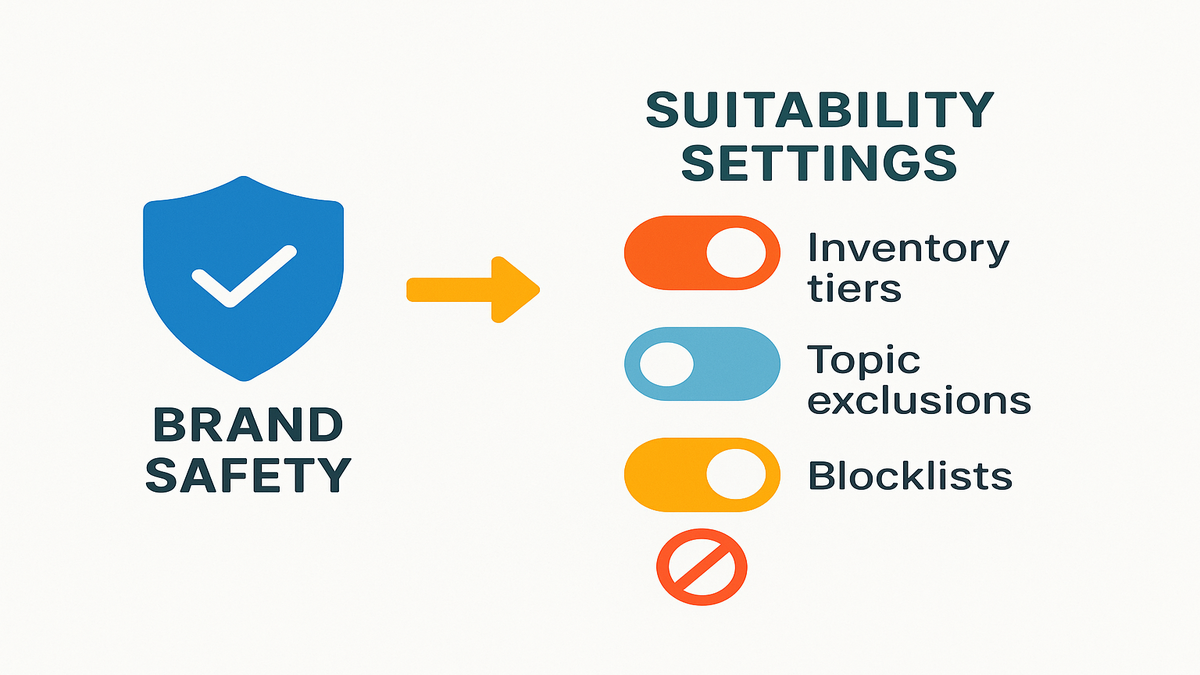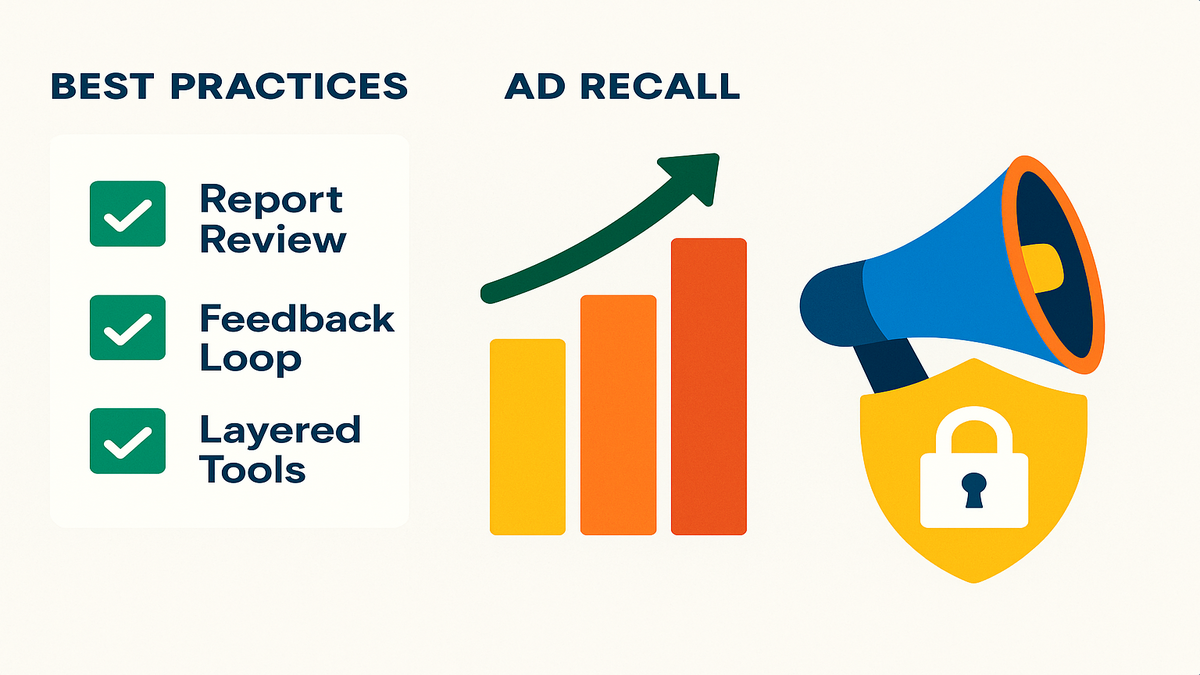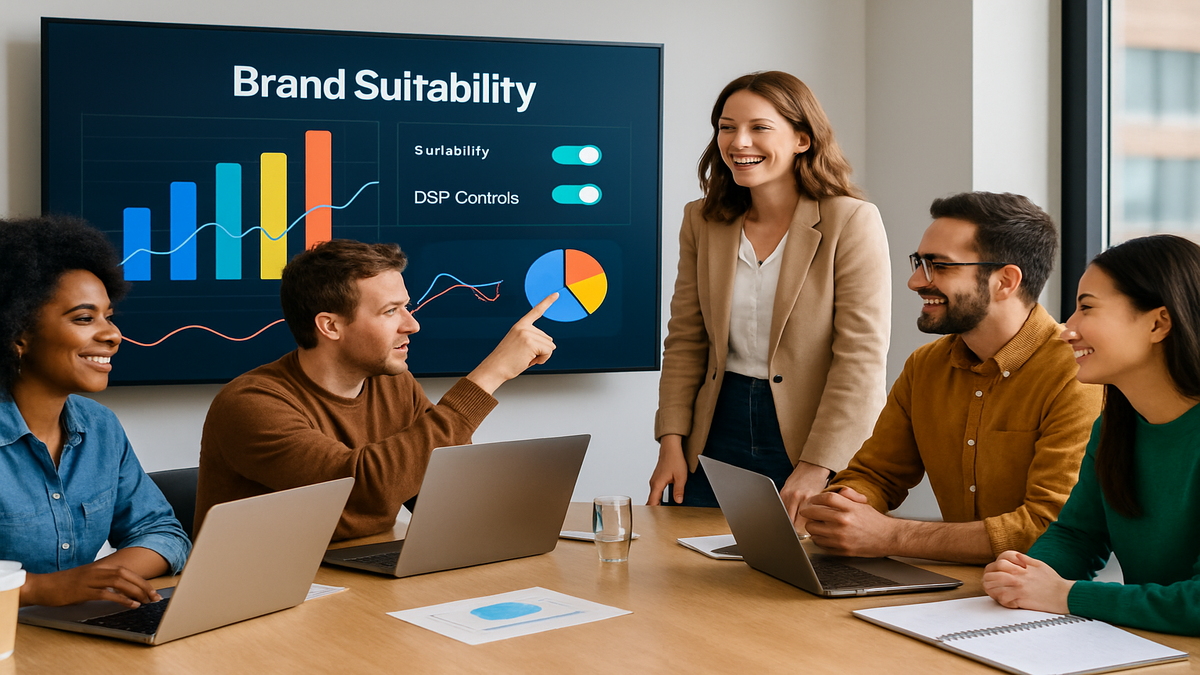
Unlocking DSP Brand Safety: Suitability Settings Decoded

In 2024, a single weird YouTube ad spot can flip a million bucks in DSP spend into a million-dollar nightmare. Welcome to the messy frontlines of brand image.
Alright, let’s be real. You grind hard on every campaign. But it just takes one bad ad stuck next to shady stuff online and—bam—your brand’s hard work is toast. Programmatic ads? Super powerful. You get wild reach and top efficiency. But, it can put your ad between strange memes, cringe moments, or news no one should see.
Thinking, “Nah, my brand’s safe, we’re careful”? Guess again. This isn’t just a Facebook or YouTube thing—any place you put automated ads (streaming, display, retail platforms), your brand’s hanging by a thread every day. One viral screenshot and you’ve got a firestorm—a wave of bad press, lost trust, or maybe your CEO screaming, “Seriously? How?”
Here’s the good news: DSP brand suitability tools are getting good—and fast. We’re talking sharp filters, deep blocklists, instant reporting, and outside guardrails on Amazon, Adobe, Meta, and others. Yes, they’re still open beta. But that means you get early dibs, input on features, and can push where the roadmap goes. Basically, you get to choose whether to run your ads wild—or play it safe.
Ready to lock down your ad buys without losing all your reach? Start digging into DSP Services built for brand safety, analytics, and protection. If you lead an agency, work growth, or are a brand marketer, now’s the moment to peek under the hood on this huge ad shift. Because in 2024, safety’s not a bonus anymore—it’s insurance. The must-have for avoiding wasted cash, PR storms, or that slow, quiet drain of customer trust.
TL;DR
- New DSP tools mean you finally control where programmatic ads land.
- Open beta on Amazon, Adobe, Meta = early access and fast tweaks.
- Most-used settings: inventory levels, topic exclusions, publisher blocklists.
- Real-time data and third-party guards give you control.
- Beta means bugs—watch your results, tweak, and keep looking for wins.

The Messy Reality
From Safety to Suitability
Back in the day (well, 2017), “brand safety” meant just keep ads away from bad stuff: NSFW junk or fake news. But the internet moves fast. These days, people have zero patience for brands in the wrong spots. “Safe” ain’t enough. Now we’re in the age of brand suitability. It’s not just about what’s “bad”—it’s also “does my ad make sense here?”
So, what changed? Basically, everything. Imagine your eco-skin care ad landing in a YouTube video doubting climate change. Or your vegan snack being placed before a video on “How to Make the Ultimate BBQ Ribs.” Sometimes it’s not even “bad” content—it’s just kinda weird for your brand. Suitability asks: does my ad actually fit the scene?
As Claire Atkinson, media pro, says, “DSP suitability is like oxygen now. It’s the wall between your ad budget and a disaster tomorrow.” Modern DSPs like Adobe and Amazon split content into layers: moderate, limited, ultra-limited. Moderate = big reach. Ultra-limited = super safe, nothing off-script, even ditches most live videos.
Every Brand Has Its Own Needs
Think about it. Skateboard company? Go for meme-friendly and a little edge. Big money firm? Gotta stay miles from controversy. Suitability is about picking your risks, not hiding from them all.
Why Suitability Matters
- The internet never sleeps: That weird ad placement from 2022? Yup, it’s still Google-able, screenshot-able, and customers still share it.
- Trust is gold: 71% of people say seeing ads by “offensive” stuff kills trust. Not just a stat—that’s lost sales. (IAS, 2023)
- Regulators are watching: Laws keep changing. More eyes on ad spots in the US, EU, APAC. New rules are coming. Play smart, stay ready.
Here’s the deal: brand suitability is your line between “all good” and “bad press land.” And it’s only getting harder.
The Nitty Gritty
Tiers and Exclusions
Today’s DSPs are like sitting at a sound booth—you get to twist the dials. Here’s what these beta tools do, and why it matters.
Inventory Filtering
- Expanded: Go big, low filtering, you get scale. Works if you’re bold—not so dreamy for banks or health brands.
- Moderate: The usual pick. Blocks basic bad stuff: hate, violence, fake news. Good for brands who aim high but want safety nets.
- Limited/Ultra-Limited: All bubble wrap. Avoid gray areas—steer clear of debates, sketchy live streams. Zero tolerance brands, this is your mode.
“Advertisers layer these beta tools for safety, but also see what risks are okay for more reach,” says Jason Knapp from Adobe DSP. Bottom line: test a little, check results, and tweak a bunch.
Topic Exclusions
Picking what you block is super easy now. Hate gambling? Skip. Don’t want violence, politics, or weird theories? Just click. The more you block, though, the smaller your audience gets.
But on the plus side, you can get really detailed. Block “meat cooking videos” if you sell vegan shakes. Ban “crypto speculation podcasts” for your FinTech. And you don’t lose all your reach in the process.
Publisher Blocklists
See your ad on a sketchy meme site? Just block it. Modern DSPs show you exact spots where your ad went and let you blacklist any publisher or URL fast. If something sneaks by, you can shut it down.
Third-Party Integrations
Want max protection? Add companies like DoubleVerify, Integral Ad Science (IAS), Oracle, or Peer39 on top. They use AI and real humans to check, score, and weed out bad web and video spots—before bidding even happens. The smart play is stacking two or more so if one misses, the others catch it.
Pro tip: Treat these tools like a crew, not one hero. Relying on just one will leave blind spots. Stack up to plug the gaps.
Cheat Sheet for Tiers
- Love big reach, can stomach risk: Expanded.
- Want reach, but need a safety belt: Moderate mode.
- Hate surprises, need control: Limited/Ultra-Limited.
Spot conversions tank or see bad placements? Time to switch settings. Beta brings fast changes, so test small, then scale up when you find your groove.
Open Beta Breakdown
Amazon DSP
Amazon’s open beta, especially for Twitch, packs way more control. Here’s what’s cool:
- Brand and Ad Group Controls: Not just once and done. Fine-tune at any campaign level. Relax rules for one product, go tight for another.
- Custom Tier Settings: Don’t want the defaults? Change them with
brandSafetyTierInheritedSettingDetails. Your lawyer will thank you. - Real-Time Excludes,
brandSafetyTierTarget: Find trouble? Block instantly.
You get super-detailed “brand suitability reports” with every spot. Less mystery, more ammo for quick campaign tweaks.
One catch: Amazon’s tools are solid for display and video right now. Audio and sponsored products are next, but not all the way there yet. Stay tuned.
Want all your Amazon data in one spot? AMC Cloud links Amazon DSP reporting, tracking, and analytics so you don’t drown in tabs.
Adobe Advertising DSP
Adobe’s beta is catnip for analytics fans. Here’s why:
- Universal Video Spots: Stack DoubleVerify or IAS even on video. Running cross-platform campaigns? This is huge.
- Objective Weighting: Add custom tags (like “ADSP_”) so Adobe’s system learns what matters most—performance or safety. You get real hands-on control.
- Stack Third-Party Partners: Run DoubleVerify, IAS, and Oracle together. Means triple backup on your highest value spots.
For example: If you wanna play it safe, lock all three partners plus your strictest settings. That’s lockdown level.
Meta DSPs
Meta (yep, Facebook and Insta) is all-in on suitability: blocklists, topic bans, inventory filtering—getting sharper every beta drop.
Susan Li, an analytics lead, says, “Meta’s tools cut our risky ad tickets by 80% since late last year.” (That’s huge.)
Near-instant reporting is a game changer. You can fix risky spots before they become memes. Plus, Facebook Business Manager makes all of this less of a headache.

Beta Bumps and Lessons
Bugs and Wins
Let’s be honest: beta = drama. Here’s what advertisers actually ran into:
- Random scale drops: Block too much, shrink your scale. Suddenly you’re only buying ads on cat videos.
- Filters can miss: No system’s perfect—sometimes junk slips through. Manual checks are still your backup.
- Slow reports: When they patch stuff, reports might lag for a day or so.
But here’s the win: Amazon’s Brand Lift Study found a +12% bump in ad recall when ads matched the brand. (Amazon Brand Lift Study). So, it’s not just about avoiding mess—it’s about getting more bang (and love) for your buck.
Street-Smart Tips
- Stay tight with your DSP crew or agency. Weekly report checks—non-negotiable, especially in beta.
- Make gutsy changes, but don’t chase some “perfect” setup. Feedback right now helps the tools get better for everybody.
- Catch misses fast, block fast, and keep tweaking. Beta’s wild—but you help make it better.
Compliance Tsunami
Nervous about new laws? You should be. Governments are dead serious about ad transparency. France, Germany, and California might slap big fines for bad ad spots—especially for kids, health, or politics. The more you self-monitor now, the less you’ll stress when laws hit your turf.
Prediction: Suitability controls will be 100% expected, every time. Early adopters will avoid the panic sprints later.
Suitability Facts
- Brand safety isn’t suitability: Safety keeps you out of the worst. Suitability puts you where your real audience hangs out—even if it’s edgy, or bubble-wrapped.
- Beta = always changing: Watch your tools, update fast, train your team.
- Data is your best friend: Delivery and publisher reports—dig in. Don’t just show screenshots to the boss.
- Mix manual and automated reviews: Tools help, but real eyes catch more. Together = win.
- Speak up: Your issue reports go straight into future features.
How Smart Marketers Win
Quick Recap
- Don’t add safety at the end—bake it into your planning from day one.
- Pick filters that match your comfort with risk, and check reports every week, not just once a month.
- Scan reports for weird stuff. Block it quick. Don’t let it linger.
- Use DoubleVerify, IAS, Oracle—layer two or more. One isn’t enough.
- Give honest, regular feedback to your DSP people. You help shape what’s next.
FAQs
1. What’s the difference between brand safety and brand suitability?
Brand safety = avoid the worst junk: illegal stuff, violence, hate. Brand suitability = show up only where it fits who YOU are (like a vegan snack skipping BBQ videos).
2. Which DSPs have suitability beta tools now?
Amazon DSP (really good for Twitch, display, video), Adobe (great on video and custom targets), Meta (Facebook and Instagram placements). More are coming all the time.
3. How do I pick the right settings?
Start moderate. Check your delivery report. If you spot problems, go stricter. Need more reach? Loosen up. It takes testing.
4. Do these beta tools change my costs or performance?
Yep. More rules usually means fewer people see your ad (you might pay a bit more too). But, you dodge PR messes and customer drama. Plus, most brands see better recall and happier fans.
5. Can I use more than one verification partner?
Definitely. Stack DoubleVerify, IAS, Oracle, whoever—just watch those exclusions. Don’t block yourself into a corner.
6. What’s next for DSP suitability?
Sharper controls for audio, TV, and smarter filtering before 2025. Easier rollbacks and cleaner reports are on the way.
Steps to Tighten Suitability
- Set Filters Early: Start with “moderate.” If sensitive tests flag issues, crank up to “limited.”
- Weekly Report Checks: Audit delivery and publisher reports. Something feels off? Block or flag it today.
- Add Third-Party Tools: Plug in stuff like DoubleVerify, IAS, Oracle (i.e. context segment IDs for best coverage).
- Fine-Tune Your Goals: Tweak campaign name and goals—especially in Adobe—so suitability matters to your algorithm.
- Give Feedback: Report bugs and requests to your DSP reps. If you don’t ask, you don’t get.
- Review Every Month: Revisit who you block or avoid. Take people off your no-go list if platforms get cleaner, so you don’t shrink forever.
A year ago, buying programmatic ads felt like spinning a roulette wheel. Big spend, fingers crossed, hope your brand survived. Now, with DSP suitability controls (even in beta), you’re back in charge—tweaking for safety, trust, and seriously better results.
Bugs happen. Platforms change. But brands that push hardest, test quickest, and speak up really are shaping the best, safest ad tools you’ll get. Don’t watch from the sidelines—get in the beta, own those analytics, and build oversight into your team’s DNA.
Want to dig into how safer placements boost brands? Check the Amazon brand lift study. Or want hands-on demos for attribution and reporting? Dive into Amazon attribution. Stay hungry, keep learning, protect your brand. The next digital mess is always one click away.

